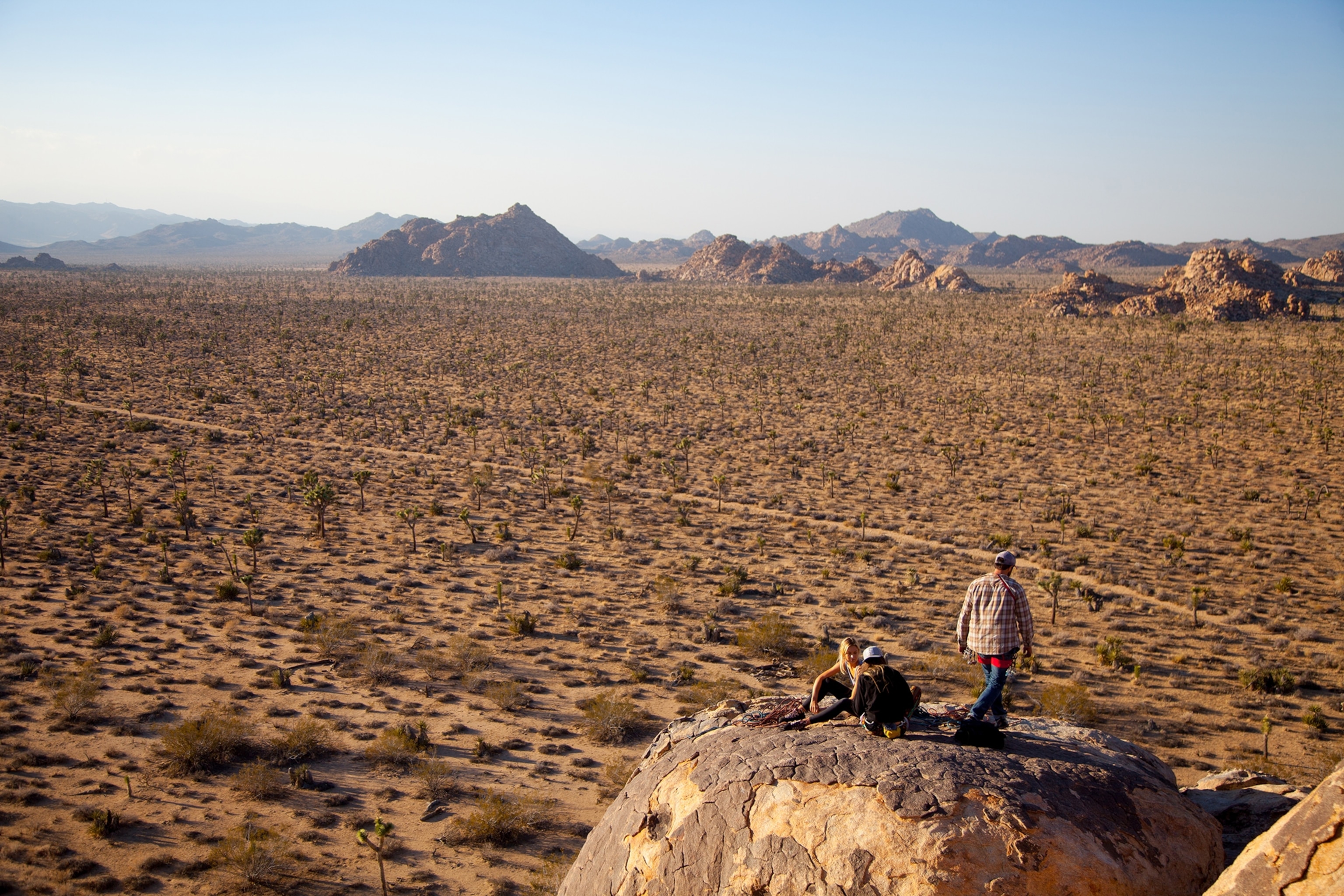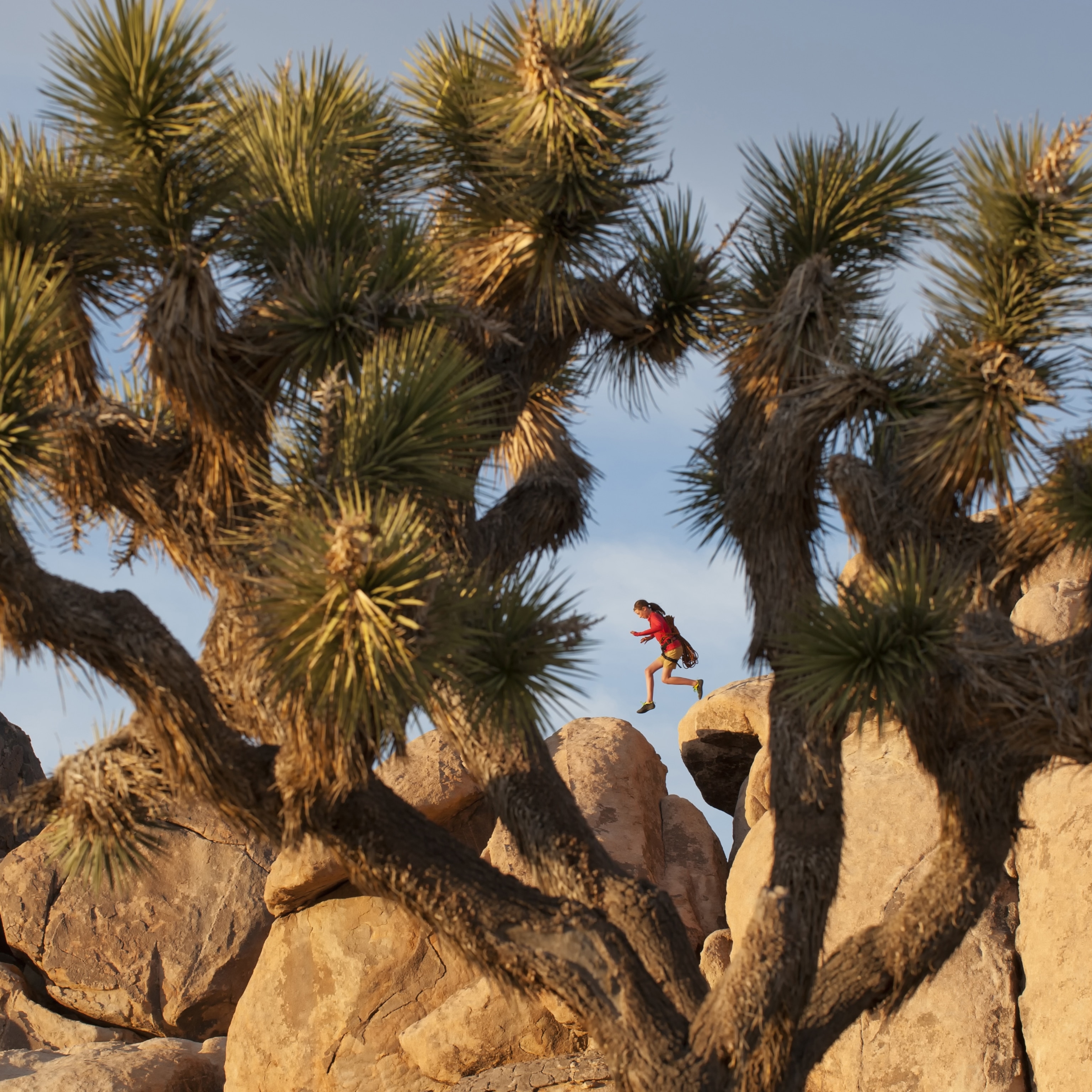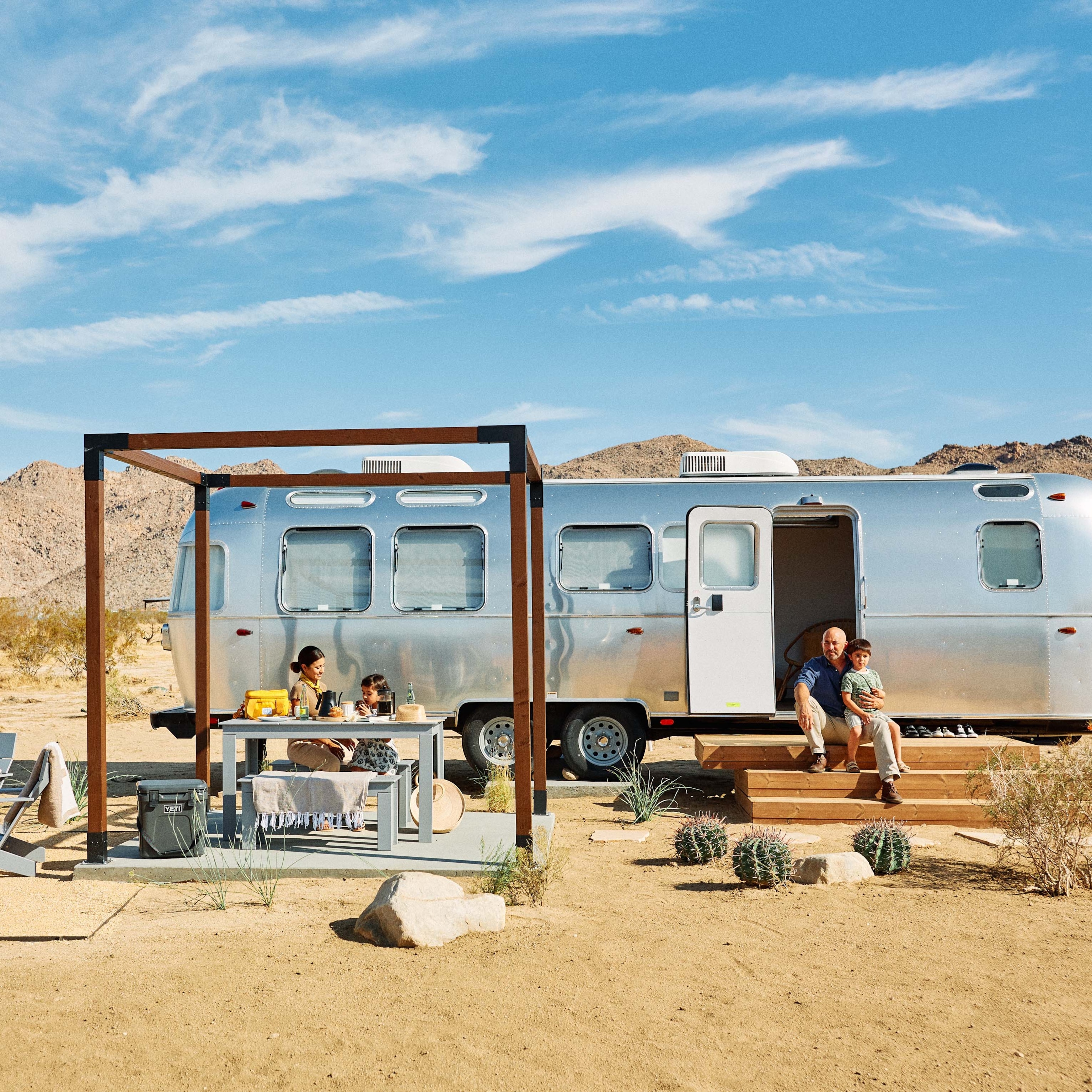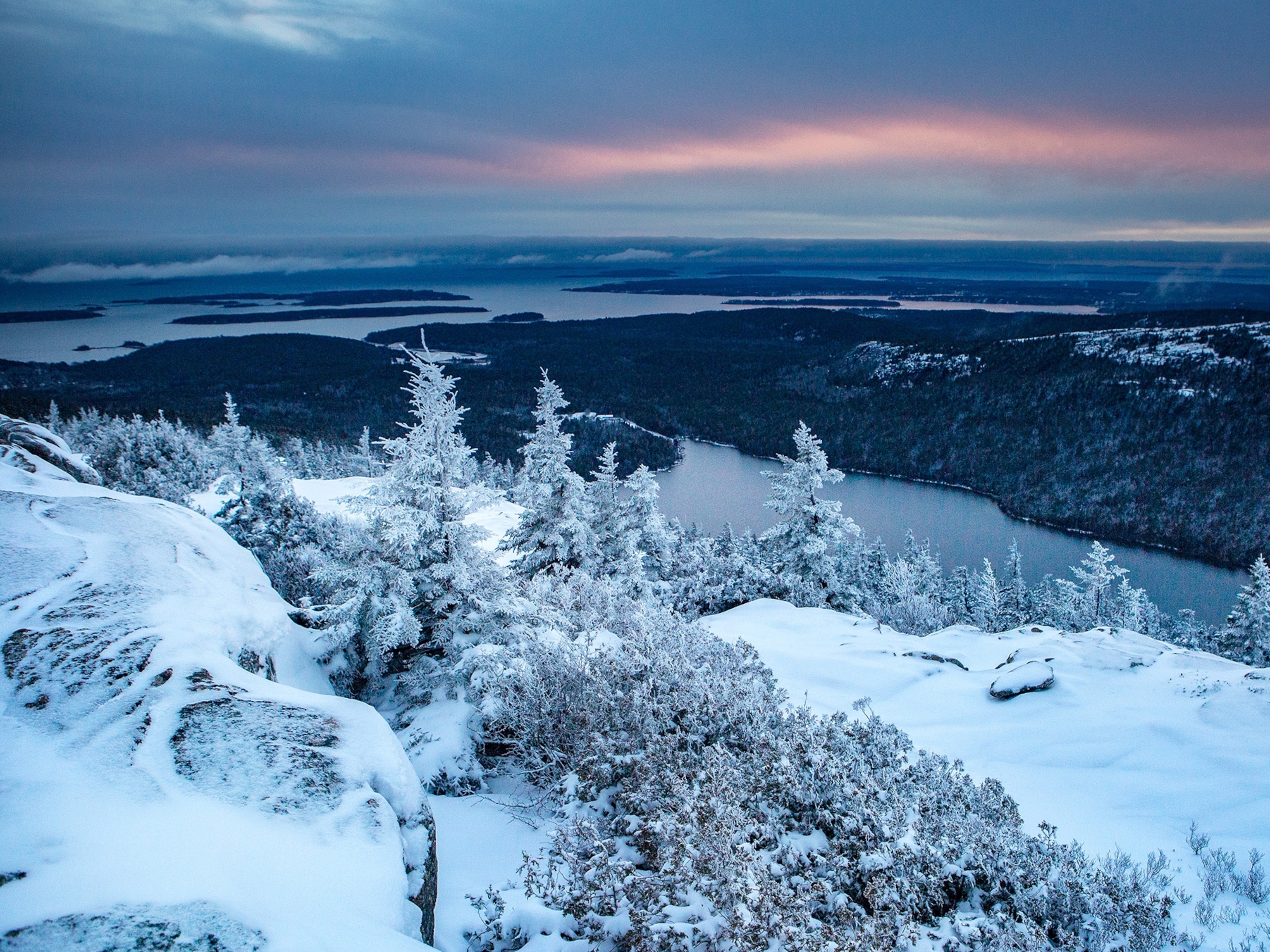Everything you need to know about Joshua Tree National Park
Arid low desert and vegetated high desert meet in this beloved natural gem, offering visitors stunning vistas and rewarding hikes.

Joshua Tree National Park is often described as an out-of-this-world experience or healing for one’s soul, says Donovan Smith, the park’s public information officer. “With blue sunny skies almost year-round, the wide-open vistas allow the visitor to experience the true vastness of the landscape from almost anywhere in the park. It’s an extraordinary place to connect with the beauty and reliance nature has to offer.”
Newcomers among the three million visitors who pass through each year are often surprised by the abrupt transition between the park’s Mojave and Colorado deserts.
The Mojave or “High Desert” claims the park’s western half, where giant branching yuccas thrive on sandy plains studded by massive granite monoliths and rock piles. These are among the most intriguing and photogenic geological phenomena found in California’s many desert regions.

The Colorado or “Low Desert” thrives on the park’s gently declining eastern flank, where temperatures are usually higher. It often seems sparse and forbidding. Yet here and there are colorful desert “gardens” of flowering ocotillo and cholla cactus.
Dozens of trails are open to hiking, biking, and horseback riding, and the stony terrain makes it one of America’s rock climbing meccas. Spring brings a carpet of wildflowers, and the super-clear desert night sky makes the park an oasis for stargazing.
(A complete guide to hiking in Joshua Tree National Park)
Best time to visit Joshua Tree National Park
Joshua Tree is open to the public year-round. Temperatures are most comfortable in the spring and fall, with an average high of 85°F and low of 50°F. Winter brings cooler days (around 60°F), freezing nights, and the possibility of snow at the park’s higher elevations. Summers swelter with midday temperatures frequently above 100°F. The spring wildflower bloom usually starts in January or February at lower elevations and peaks park-wide in April through June.
“October through May is our busiest time of year, especially holiday weekends,” advises Donovan Smith. “During this busy time, some parking lots and first-come fire-server campgrounds can fill up as early as 8 a.m. We often see extended entrance station lines from 10 a.m. until 2 p.m.”
Best things to do in Joshua Tree
The park’s premier attractions—forests of giant branching yuccas known as Joshua trees, massive rock formations, fan palm oases, and seasonal gardens of cholla and ocotillo—can be enjoyed on a leisurely half-day auto tour along the main park roads.
Starting from the main visitor center in the town of Joshua Tree, Park Boulevard crosses the western half of the park to Hidden Valley. Along the way, there is a trailhead for the short hike up Cap Rock and ranger-led tours of historic Ryan Ranch as well as the turnoff to panoramic Keys View.
Continuing over Sheep Pass, the boulevard drops into Queen Valley and a huge Joshua tree forest. The 18-mile Geology Tour Road runs south through the valley, with 16 stops along the way that explain how the park’s dramatic landscape was formed. Along the valley’s eastern edge are the Jumbo Rocks and eerie Skull Rock, a natural formation that looks like a skeleton’s head.
Reaching the T-junction at Pinto Wye, drivers turn left and explore the lush Oasis of Mara palm grove beside the Oasis Visitor Center. Or hang a right and follow Pinto Basin Road into the park’s lesser-known eastern expanse where other iconic desert plants—cholla cactus, ocotillo, cottonwood trees, and California fan palms—overshadow the famous trees. The most popular stop along this route is the gorgeous Cholla Cactus Garden.
Cottonwood Visitor Center anchors the park’s southeast corner and a hiking area that includes trails to Mastodon Peak (three miles) and the remote Lost Palms Oasis (seven-point-five miles). Just outside the park, the General Patton Memorial Museum at Chiriaco Summit includes a large collection of battle tanks and mementos of the general’s military exploits from World War II.
(8 family-friendly things to do in Joshua Tree)
- National Geographic Expeditions
Where to find the best views in Joshua Tree
Keys View is one of the most iconic panoramas in the entire Park System. It’s located on the crest of the Little San Bernardino Mountains and offers a mile-high vista of Coachella Valley, and at a distance: the Salton Sea, Mount San Jacinto, San Andreas Fault, and the Anza-Borrego Desert. The view is especially enchanting at dusk when Palm Springs, Indio, and other valley cities sparkle with millions of lights.
In the heart of the park, 5,456-foot Ryan Mountain renders bird’s-eye-views of Hidden Valley and Queen Valley at the top of a steep, difficult hike that (out and back) totals three miles.
(The best places to stay at Joshua Tree National Park.)

What are the entrance fees for Joshua Tree?
Fees: $30 for private vehicles, $25 for motorcycles, $15 for individuals. Fees are subject to change, so check the website before heading to the park.
Access: There are only three ways visitors can enter the park: from Yucca Valley in the west, Twentynine Palms in the north, and Cottonwood Springs in the south. From Los Angeles, take Interstate 10 and Highway 62 to Yucca Valley (120 miles) and Twentynine Palms (142 miles); or Interstate 10 to Indio and Cottonwood Spring (160 miles).

Are pets allowed in Joshua Tree?
Pets are not allowed on hiking trails, park buildings, or anywhere in the backcountry. They are permitted within 100 feet of roads, parking areas, and campgrounds but must always remain on a leash.
Service dogs are allowed anywhere that human visitors can go in the park. However, emotional support, therapy, and companion animals are not considered service animals.
Is Joshua Tree accessible?
All three visitor centers are wheelchair accessible and have accessible parking spaces, information desks, and restrooms. Jumbo Rocks and Indian Cove campgrounds offer accessible campsites and facilities, and the picnic areas at Hidden Valley and Quail Springs are also accessible. With paved surfaces, trails at the Oasis of Mara and Keys View are the best for wheelchairs.
The official park map and brochure are available in braille, large print, and various online formats and there are tactile exhibits at four places in the park.
Go With Nat Geo: Learn more about Joshua Tree National Park in the National Geographic Guide to National Parks of the United States Ninth Edition or National Geographic Complete National Parks of the United States Third Edition.







